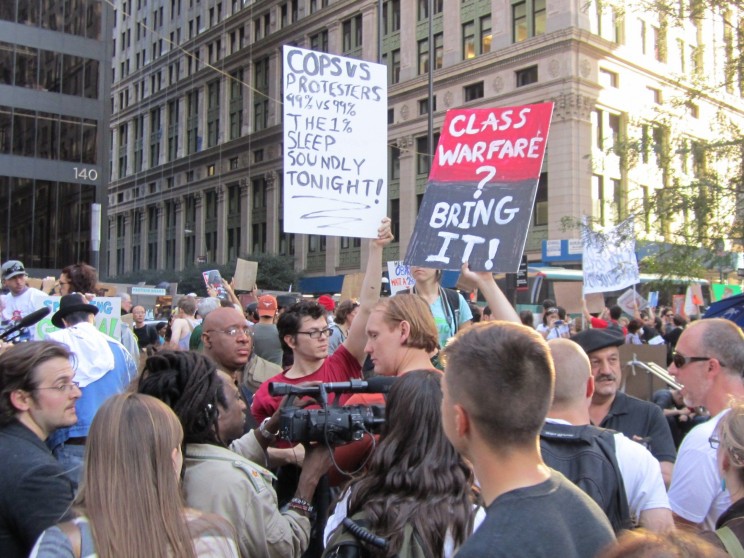new posts in all blogs
Viewing: Blog Posts Tagged with: Michael Bloomberg, Most Recent at Top [Help]
Results 1 - 5 of 5
How to use this Page
You are viewing the most recent posts tagged with the words: Michael Bloomberg in the JacketFlap blog reader. What is a tag? Think of a tag as a keyword or category label. Tags can both help you find posts on JacketFlap.com as well as provide an easy way for you to "remember" and classify posts for later recall. Try adding a tag yourself by clicking "Add a tag" below a post's header. Scroll down through the list of Recent Posts in the left column and click on a post title that sounds interesting. You can view all posts from a specific blog by clicking the Blog name in the right column, or you can click a 'More Posts from this Blog' link in any individual post.
 Eleanor Randolph has landed a book deal with Simon & Schuster for “a major biography” of Michael Bloomberg.
Eleanor Randolph has landed a book deal with Simon & Schuster for “a major biography” of Michael Bloomberg.
Randolph spent 15 years covering New York for the New York Times and now serves on the paper’s editorial board. Literary agent David Black negotiated the deal with editorial director Alice Mayhew. Here’s more from the release:
This book will follow the extraordinary career and legacy of Bloomberg, who revolutionized business reporting, who has been a powerful and innovative mayor of New York City for the last 12 years, and who has become a public figure of national significance. The book will also observe his ongoing status as a national leader.
New Career Opportunities Daily: The best jobs in media.

The Occupy Wall Street movement and OWS librarians have sued New York City in federal court over the destruction of the Occupy Wall Street Library during a late-night raid on Zuccotti Park.
The suit names mayor Michael Bloomberg, police commissioner Ray Kelly and sanitation commissioner John Doherty. According to the lawsuit (filed late last week), the city confiscated 3,600 books on November 15, 2011, but the city only returned 1,003 of the books. We’ve embedded the complete complaint below–what do you think?
Check it out: “We believe that the raid and its aftermath violated our First-Amendment rights to free expression, Fourth-Amendment rights against unlawful search and seizure, and Fourteenth-Amendment rights to due process, as well as the laws of the City of New York regarding the vouchsafing of seized property. We are demanding compensatory damages for the lost/destroyed books and equipment, which we have estimated at at least $47,000. In addition, because we believe the seizure and destruction of the books went beyond negligence to constitute a reckless and callous indifference to our constitutional rights, we are demanding punitive damages of at least $1,000.”
continued…
New Career Opportunities Daily: The best jobs in media.

By: Kirsty,
on 11/16/2011
Blog:
OUPblog
(
Login to Add to MyJacketFlap)
JacketFlap tags:
Sociology,
nyc,
new york,
Current Affairs,
Geography,
protest,
Manhattan,
abercrombie,
fitch,
Naked City,
Sharon Zukin,
michael bloomberg,
fifth avenue,
*Featured,
Law & Politics,
Occupy Wall Street,
Zuccotti Park,
zuccotti,
Add a tag
By Sharon Zukin
Until the early morning of November 15, a few hundred Occupy Wall Street protesters spent the chilly nights of a glorious autumn camping out in Lower Manhattan’s Zuccotti Park. Despite Mayor Michael Bloomberg’s disapproval with their politics and under the New York City Police Department’s anxious eye, the occupiers captured public attention in a remarkably peaceful way. Regrouping for the winter, they will take stock of what they have achieved so far and the work that remains.


Though the occupation was initially ignored by mainstream media after it began in September, the protest movement attracted favorable attention both nationwide and internationally. Arrests flared in other U.S. cities, notably Oakland, California, where protesters tried to recall a famous general strike of 1946 by marching to the port. But unlike in Oakland, and Portland, Oregon, the encampment at Wall Street survived the constant threat of being rousted by police action on the one hand and cold weather on the other without death, disaster or dishonor.
An official order to clear Zuccotti Park was squelched in October by the intervention of local city council members and other politicians—some of whom, not coincidentally, plan to run for office in the 2012 elections. Many local labor unions support the movement, suggesting that alliances may be possible across “police and firefighter” lines. This kind of alliance recently won a referendum in Ohio overturning a state law that would have limited public unions’ collective bargaining rights.
In Zuccotti Park protesters formed a tiny city within the city. Food, clothing and books were donated and handed out. Electric generators that were confiscated by the fire department were returned after volunteer attorneys complained on the protesters’ behalf. For public safety the occupiers relied on volunteer security guards who used nonviolent techniques to confront, isolate and occasionally expel troublemakers. Women and transgender protesters could, if they wished, sleep in separate tents. Before November 15, few people were arrested by the police for allegedly committing sexual or physical assault.
New Yorkers quickly became accustomed to this remarkably peaceful microcosm of urban life. On sunny weekend afternoons tourists thronged Zuccotti Park and its celebrated neighbors, the World Trade Center site on one side and the financial district on the other. I have never seen Lower Manhattan look more vibrant.
But Occupy Wall Street was only one of Manhattan’s tourist attractions. To put support for the movement’s proposed reforms in a realistic perspective it is suggestive to look at other sites in the city and the desires that they apparently fulfill.
Nearly 50 million men and women are visiting New York City this year. Nearly 50,000 of them ran in the recent New York City Marathon sponsored by ING Bank .
While protesters occupied Zuccotti Park in tents, the average price of a hotel room in New York City is $250 and the hotel occupancy rate is
0 Comments on Memo from Manhattan: Occupying Wall Street—and Fifth Avenue as of 1/1/1900
By Sharon Zukin
Everyone knows by now that Tropical Storm Irene, which blew through the East Coast last weekend, flooded the beaches, suburbs and some inland towns but did little lasting damage in New York City. I have seldom felt so lucky to live on a high floor with no river view and on a street with very few trees.

By Edward Zelinsky
Connecticut’s new governor, Dannel P. Malloy, has appointed six sitting members of the Nutmeg State’s General Assembly to positions in the executive branch. These gubernatorial appointments have engendered a fair amount of discussion since special elections will be required to fill the legislative vacancies resulting from these appointments.
There has, however, been no public discussion of the pension implications of these appointments. Under Connecticut’s retirement plans for government employees, relatively brief service in executive positions results in significant spikes in legislators’ state pensions. This phenomenon is not unique to Connecticut.
The issue of legislators’ pension spikes suggests how difficult it will be for state governments to curb their unruly pension costs. Legislators’ pension spikes are the broken windows of the state pension crisis, emblems of underlying fiscal disorder.
While the details are complex, the basic arithmetic is not: Connecticut state employees (including legislators) are covered by contributory defined benefit pension plans. These plans provide “final average” pensions, meaning that a participant’s pension is based on the highest salary he earns during his last three years of state employment.
To take a simplified, but substantively accurate, example, suppose that a Connecticut legislator serves for twenty years at a constant salary of $30,000 per year. Suppose further that the state’s defined benefit pension plan pays this legislator a retirement annuity equal to his final salary multiplied by one percent for each of his years of state service. In this case, the legislator is entitled to a retirement annuity of $6,000 yearly because $30,000 X 20% = $6,000.
Now suppose that this same individual spends seventeen years in the General Assembly and then works in the executive branch for the last three years of his state career at an annual salary of $100,000. Under the retirement plan’s final average formula, the legislator’s final average salary spikes and thus so does his pension. In this simplified example, the three years of full-time executive branch employment rachet the former legislator’s state pension from $6,000 annually to $20,000 yearly because $100,000 x 20% = $20,000.
In effect, the former legislator’s last three years of full-time executive service at a salary of $100,000 retroactively balloon the value of his first seventeen years of relatively low-paid, part-time legislative service. The result is a tripling of the former legislator’s pension even though he only works at the higher salary for the last three of twenty years in state government. The legislator gets the same pension as does a Connecticut state employee who, over his twenty year career, consistently earned a full-time salary of $100,000.
Another way of characterizing this pension spike is that the governor bestows upon this former legislator a signing bonus for joining the executive branch of state government. Since he works for the governor at the higher executive salary, the former legislator’s state pension increases more than three-fold during his relatively short executive branch service.
Quantifying this signing bonus as a lump sum involves many details and qualifications, such as assumed interest rates, life expectancies, and other actuarial variables. However, under conservative assumptions, in this simplified example, the present value of the former legislator’s increased pension is at least several hundred thousand dollars. Frequently, in practice, the amounts involved are even more.
If Governor Malloy had granted each of his appointees from the General Assembly a $200,000 check as a signing bonus, the public outcry would have been overwhe
 Eleanor Randolph has landed a book deal with Simon & Schuster for “a major biography” of Michael Bloomberg.
Eleanor Randolph has landed a book deal with Simon & Schuster for “a major biography” of Michael Bloomberg.




